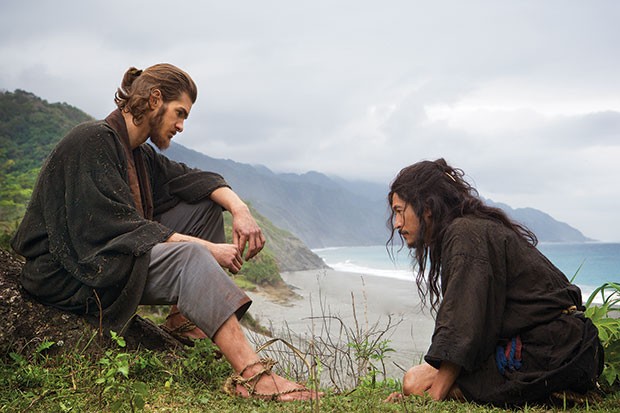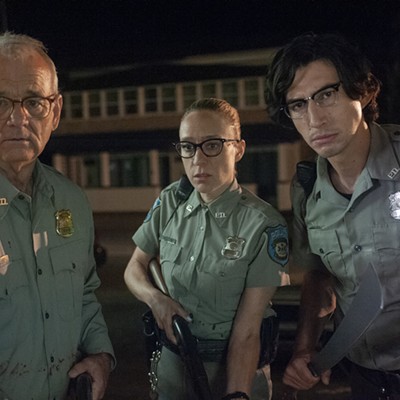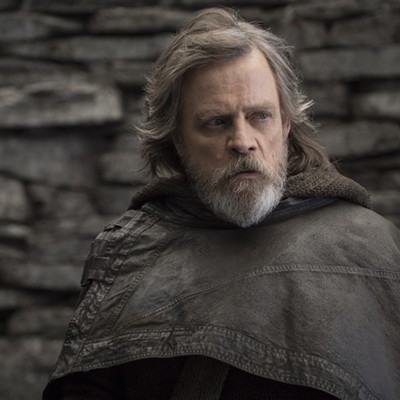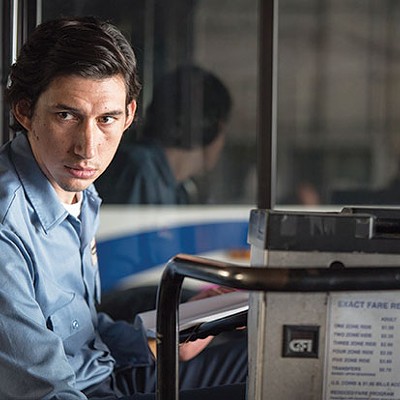Silence
Martin Scorsese’s slow-motion epic is an exploration of faith that is of interest, but not particularly entertaining

Silence
Directed by Martin Scorsese
Starring Andrew Garfield, Adam Driver, Issei Ogata
In English, and some Japanese, with subtitles
Starring Andrew Garfield, Adam Driver, Issei Ogata
In English, and some Japanese, with subtitles
Martin Scorsese’s new movie Silence takes place in late-17th-century Japan, a country in the final stages of ridding itself of European Catholic missionaries and stamping out any residual followers. But back in Portugal, two young priests — Rodrigues (Andrew Garfield) and Garrpe (Adam Driver) — decide to sneak into Japan and determine the fate of their mentor, Father Ferreira (Liam Neeson), said to have renounced his faith. Impossible!
They make it to a tiny fishing village of converts, but in time, all Christians are tracked down by the Inquisitor (Issei Ogata) and forced to renounce their faith under threat of torture or death. Rodrigues proves the holdout, enduring all manner of spiritual, psychological and physical abuse.
Scorsese’s slow-motion epic is an exploration of faith that is of interest, but not particularly entertaining. The film’s length is indulgent, and repetitive scenes grow tedious. It has an experiential quality — a gorgeous dourness — that may engross those who are moved by its literal depiction of keeping faith.
Silence aims for lyricism but is often ham-fisted. Characters do a lot of themes-speaking (“the price for your glory is their suffering”); voiceovers explain what to think; and religious totems are fetishized. It’s not enough that Garfield, with his boyish features and lush mane, is styled like the sad-eyed Jesus of a thousand Renaissance oils and Tijuana tapestries — Scorsese literally superimposes a portrait of Jesus onto Garfield.
The handsome Silence employs plenty of craft — from fine cinematography and a variety of exquisite mists and fogs, to appropriately raggedy costumes and well, silence (ambient sounds take the place of Scorsese’s usual classic-rock tunes). And in the silence, there are long stretches for viewers to think about religion and its cultural and geo-political imports. (Couldn’t help thinking about how the European Christians lauded here did a lot of religious repeal-and-replace around globe, and often at the point of a sword.)
Speaking of pointy sticks, Silence offers a series of baroque tortures involving hot springs, inversion boxes and epigrammatic lectures; not content to simply crucify Christians, the Japanese erect the crosses in the rising surf. Scorsese films such scenes in glorious, lurid detail (think: an especially solemn Hammer film).
Viewers will disagree over the success of the thematic material — some will find the work affirmative and inspirational. Alas, I was mildly interested but never converted. Silence, while acknowledging that different faiths exist, clearly gives primacy to one, and its big ideas felt trivialized when represented by two limited archetypes — the smug oppressor and the unwavering faithful. We have enough troubles without getting into proxy religious wars from centuries ago. Silence might raise questions that could be applied to our contemporary disputes, but it doesn’t offer any clarity. Frankly, the film could just as easily steer people away from organized religions, with its depiction of their rigid dogmas and never-ending feuds with other creeds.
They make it to a tiny fishing village of converts, but in time, all Christians are tracked down by the Inquisitor (Issei Ogata) and forced to renounce their faith under threat of torture or death. Rodrigues proves the holdout, enduring all manner of spiritual, psychological and physical abuse.
Scorsese’s slow-motion epic is an exploration of faith that is of interest, but not particularly entertaining. The film’s length is indulgent, and repetitive scenes grow tedious. It has an experiential quality — a gorgeous dourness — that may engross those who are moved by its literal depiction of keeping faith.
Silence aims for lyricism but is often ham-fisted. Characters do a lot of themes-speaking (“the price for your glory is their suffering”); voiceovers explain what to think; and religious totems are fetishized. It’s not enough that Garfield, with his boyish features and lush mane, is styled like the sad-eyed Jesus of a thousand Renaissance oils and Tijuana tapestries — Scorsese literally superimposes a portrait of Jesus onto Garfield.
The handsome Silence employs plenty of craft — from fine cinematography and a variety of exquisite mists and fogs, to appropriately raggedy costumes and well, silence (ambient sounds take the place of Scorsese’s usual classic-rock tunes). And in the silence, there are long stretches for viewers to think about religion and its cultural and geo-political imports. (Couldn’t help thinking about how the European Christians lauded here did a lot of religious repeal-and-replace around globe, and often at the point of a sword.)
Speaking of pointy sticks, Silence offers a series of baroque tortures involving hot springs, inversion boxes and epigrammatic lectures; not content to simply crucify Christians, the Japanese erect the crosses in the rising surf. Scorsese films such scenes in glorious, lurid detail (think: an especially solemn Hammer film).
Viewers will disagree over the success of the thematic material — some will find the work affirmative and inspirational. Alas, I was mildly interested but never converted. Silence, while acknowledging that different faiths exist, clearly gives primacy to one, and its big ideas felt trivialized when represented by two limited archetypes — the smug oppressor and the unwavering faithful. We have enough troubles without getting into proxy religious wars from centuries ago. Silence might raise questions that could be applied to our contemporary disputes, but it doesn’t offer any clarity. Frankly, the film could just as easily steer people away from organized religions, with its depiction of their rigid dogmas and never-ending feuds with other creeds.

















